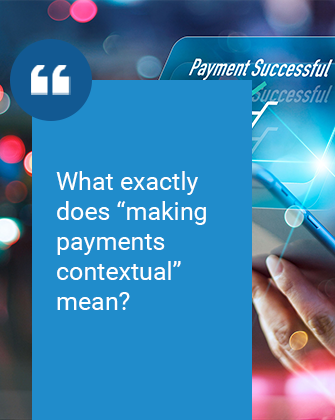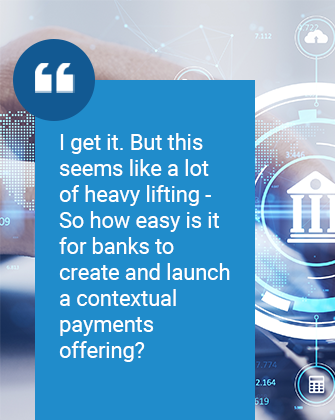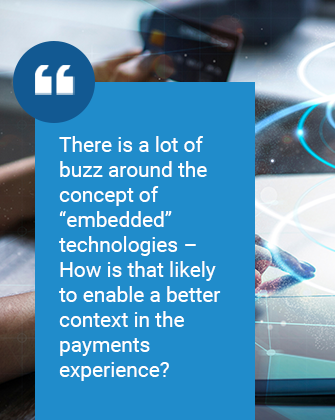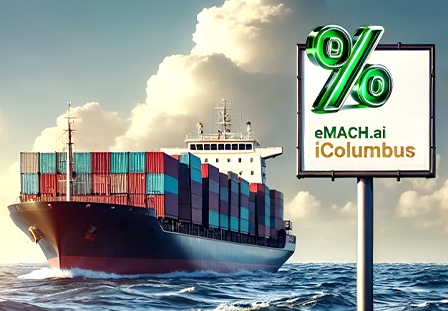- What we do
-
-
-
-
"Intellect’s continued dominance at the IBSi Sales League Table underscores its pioneering role in the fintech industry. Their commitment to innovation, exemplified by the groundbreaking eMACH.ai platform, continues to set a high benchmark in Retail Core Banking, Transaction Banking, and Lending. Intellect’s solutions are not only reshaping the present landscape but are also poised to lead the evolution of financial services globally, driving unprecedented advancements and customer-centric solutions."

Robin Amlôt
Managing Editor at IBS Intelligence
-
-
-
- Company
-
-
-
-
"Intellect’s continued dominance at the IBSi Sales League Table underscores its pioneering role in the fintech industry. Their commitment to innovation, exemplified by the groundbreaking eMACH.ai platform, continues to set a high benchmark in Retail Core Banking, Transaction Banking, and Lending. Intellect’s solutions are not only reshaping the present landscape but are also poised to lead the evolution of financial services globally, driving unprecedented advancements and customer-centric solutions."

Robin Amlôt
Managing Editor at IBS Intelligence
-
-
-
- Knowledge
-
- Our Events
- Contact Us
Africa Roundtable Event
Learn More News FlashiGTB Pulse Newsletter May 2025
Learn More News FlashHighlights of iGTB at EBAday 2025
Learn More News FlashEnhancing Corporate Payment Efficiency with SWIFT GPI Tracker powered by eMACH.ai
Learn More News FlashEmpower Digital Payments: KPI-Driven Payments with Self-Service Intelligence
Read More News FlashUnlocking Africa’s Trade Finance Potential: Driving Growth Through Digital Innovation
Read More


Making Payment Contextual – An Idea Whose Time Has Come
A perspective on the evolution and impact of Contextual Payments as a topic that is rapidly changing the way in which banks globally are looking at transforming the payments space in line with payments modernization efforts.
Balakrishnan Narasimhan is a senior domain leader with over 29 years of experience having spent his entire career in the banking domain being both a banker and in the global core banking solutions space.
He is a Business, Technology and Operations leader with an extensive background in envisioning and implementing product strategy, delivery and large-scale transformations for the financial services industry for clients in various geographies across Asia, EMEA and the Americas.
At Intellect iGTB, Bala leads solution-led consulting activities for clients in the Americas across a variety of solutions, which include Digital Banking, Payments, Cash / Treasury Management, Liquidity Management, Virtual Accounts, Escrow Deposits and Cash Flow Forecasting.
The word “contextual” can be quite intriguing and thought provoking, especially more so in the constantly evolving world of technology advances. The thought of applying context to the interactions with banking clients has always been a product of vision and wishful thinking, but the opportunities available to banks in terms of smart and automated solutions is now making this an “idea whose time has come”.
A few weeks back I had an opportunity to lead and moderate a panel discussion at a payments event for a topic that had the exact same title as this blog, and the very interesting points raised by my panel inspired me to write a blog about this topic to spread the good word to the broader banking community.
I actually had the privilege of introducing the “context” of Contextual Payments, pun intended, at another event way back in 2019 Balakrishnan Narasimhan on Contextual Payments at The Payments Canada SUMMIT
and a lot has changed since then. One year after that event, and for a duration of more than 2 years, Covid significantly changed the way we live, work, and do business with our stakeholders. However, the good news is that the world did not stop, payments modernization continued, and we all worked towards making our respective businesses adapt to the changing context of the market. While the baseline of making payments contextual has not changed, a lot of the other surrounding concepts have developed and evolved significantly to the extent where the concept is no longer a buzz word or a luxury but is now a necessity to stay relevant in these extremely dynamic and competitive times.
In this blog, I will cover this across 3 broad dimensions –


1. What exactly does “making payments contextual” mean?
The best way to kick this off will be to rewind back to the basics and look into the very definition of what it means to be contextual in banking, and then we can probably drill down to the specifics of payments. Banks have always desired to provide a classy experience and service to customers across various channels, and they need this to be implemented in a way that is simple, quick and cost effective.
My own personal definition is that contextuality in banking is something that happens when a bank truly starts listening to its customers, paying attention to the details, the situations around their interactions and their relationship journey with the bank, and use all of this information to factor them into the way the same customers are being serviced. By infusing contextuality into your banking services, your digital offering will now start to understand, and sometimes even anticipate, what your customer is trying to achieve and help in effective cross-selling and up-selling.
This is quite obviously a vision driven with a lot of data and intelligence in the background, and if you take cues from the market in terms of adaptive technologies that have been deployed by Amazon’s online shopping and their Alexa product line, Apple’s Siri and Google’s Assistant, it is all about using client data and interactions to refine the way in which services are provided to the end user. In banking, this could be anything from finding the best way to make a payment, identifying basic account deficits or funding needs to even recommending ways to fix them, using a combination of smart business rules or artificial intelligence / machine learning (AI/ML) techniques.
So the key here is to understand the context of what the customer is trying to do and provide better and insightful recommendations that make the banking experience meaningful to them. For example, think of a small business owner who wants to send money from the US to Canada and is not sure about how to send the money (ACH, Wire, SWIFT, etc.). What if the bank allowed this customer to just enter the “where”, “who” and “how much” of the payment and provided smart recommendations that offers either quick and/or cheaper mode of sending the money?
While this is just one example, there are various other use cases that banks can come up with to make their offerings more contextual and relevant to customers.


2. I get it. But this seems like a lot of heavy lifting – So how easy is it for banks to create and launch a contextual payments offering?
Before we address this, we should take a moment to realize that the criticality of payments cannot be underestimated – they need to be accurate and timely. Customers are highly dependent on having their payments be predictable and dependable, especially with all the focus on managing their cash positions smartly. What this means is that when a bank starts to think about creative ways of making payments contextual, they need to be laser focused on the foundational elements that make the business and technology desires pragmatic and realistic without compromising on performance and resilience of systems and processes.
As much as we would love to switch on innovation overnight, the reality on the ground is that a lot of banks still have legacy mainframe based core banking solutions which have always been performance and maintenance heavy. So what banks have been doing is to build smarter wrappers around these solutions by developing APIs and Microservices that let the core do what it does best and componentizing various features into building blocks that can be easily “consumed” by other applications. The idea is to make it much efficient and simpler to connect these core systems to various other applications like payment processors (which is increasing every day with newer payment rails).
The other very common initiative that we see banks adopting is the implementation of a smart “payment hub” that orchestrates transactions flowing in from various payment rails and centralize all vital activities like payment validations, screening, data enrichment, message formatting, etc. Given the fact that ISO 20022 is becoming the new norm for a lot of the newer payment rails, this is making it a lot more standardized – Not just that, but there is this new treasure trove of remittance details and other relevant data that is now making these payments a lot more rich in content and something that can be leveraged to address more innovative contextual payments use cases “How to unlock the true value of ISO 20022?”
Lastly to make this more picture perfect, a good number of banks are also investing in smart business rule engines and/or AI / ML powered tools that provide them with the framework to analyze all these data flowing through these applications to power a variety of contextually inspired use cases for their customers.


3. There is a lot of buzz around the concept of “embedded” technologies – How is that likely to enable a better context in the payments experience?
Over the past few months, in literally every other client meeting that I have had, and all the conferences that I have attended in the post-Covid days, I have heard the terms Embedded Banking, Open Banking and Banking-as-a-Service almost consistently and I have had the enviable opportunity of speaking to a wide variety of bankers, consultants, analysts and market gurus on this topic. For those who are un-initiated on this subject, Banking-as-a-Service (BaaS) is the ability to embed financial products and services directly within the clients’ ecosystem as they serve their customers. BaaS provides the framework that allows banks to provide embedded finance and embedded banking products on their clients’ digital engagement platforms such as e-commerce or marketplaces.
To be more precise, the point of view that I have been sharing with the market is the whole evolution around three models of BaaS which are 1. Embedded Banking, 2. White Labeling
3. Enabling non-banks to function like a bank.
“What is BaaS and how does it add value to banks and their corporate customers?”.
That said, given the fact that payments processing is the backbone behind every banking product or service, the dominance of embedded payments processing is a complete no-brainer here.
This is also related to an earlier point that I mentioned about banks actively building their own APIs and microservices on top of their legacy core solutions. Embedded technologies are just using these and exposing them to the external stakeholders. See how most rideshare apps these days provide the payment options “within” their own digital experience without having to go the bank’s portal or app to make a payment and get a confirmation. Another rapidly growing example is how BNPL (Buy-Now-Pay-Later) options are available in a lot of shopping apps by embedding those services within such apps.
However, the challenge in markets like the Americas where such use cases can have a lot of potential, is that fact that Open Banking is still not in place with the much necessary regulatory framework (like PSD2 in Europe), so as a result, banks are still trying to work around that challenge to enable such Open-Banking-like services to their customers. This obviously means that the progress is slower than we would want it to be, but the market is learning, adapting and reacting to these scenarios by creating more point-to-point bespoke solutions in the interim.
So in summary, the art of making payments contextual is a treasure trove that many banks have already started tapping to make their products and solutions a lot more relevant and relatable to their customers, in turn helping the banks drive higher revenue and decreased costs.
Balakrishnan Narasimhan is a senior domain leader with over 29 years of experience having spent his entire career in the banking domain being both a banker and in the global core banking solutions space.
He is a Business, Technology and Operations leader with an extensive background in envisioning and implementing product strategy, delivery and large-scale transformations for the financial services industry for clients in various geographies across Asia, EMEA and the Americas.
At Intellect iGTB, Bala leads solution-led consulting activities for clients in the Americas across a variety of solutions, which include Digital Banking, Payments, Cash / Treasury Management, Liquidity Management, Virtual Accounts, Escrow Deposits and Cash Flow Forecasting.
Perspectives

What is BaaS and how does it add value to banks and their corporate customers?

Intellect Global Transaction Banking (iGTB) identified as a leader and "Best in Class" Payments Platform provider

Fifth Third Bank launches cloud-native self-service user experience






























